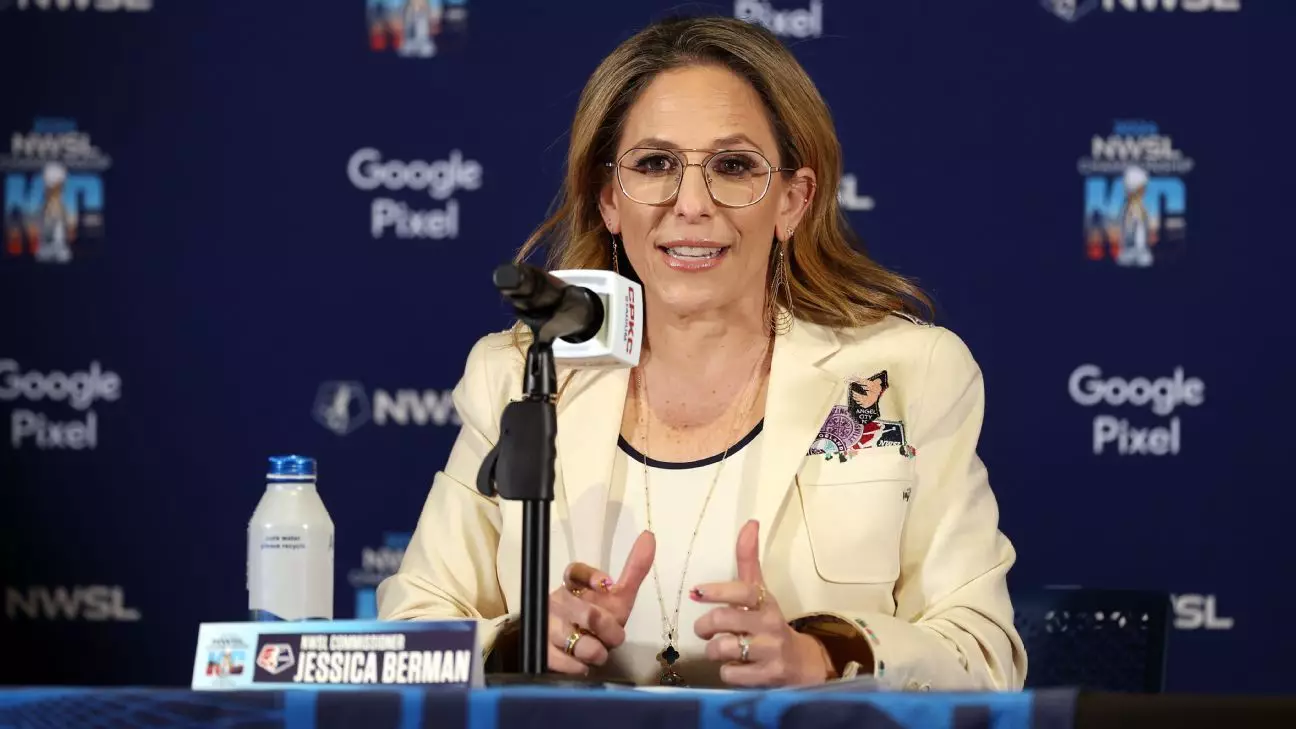As the National Women’s Soccer League (NWSL) gears up for its newest expansion, significant revelations about its future have emerged. NWSL commissioner Jessica Berman recently revealed plans to introduce Denver as the league’s 16th franchise, set to be formally announced next week. While excitement builds for this expansion, Berman made it clear that the surge in league growth won’t stop there. This article considers the implications of expansion within the NWSL context, particularly focusing on strategic planning, market evaluations, and the evolving player landscape without a collegiate draft.
Berman’s optimism about future expansions underscores a thriving interest in women’s soccer across the United States. With current expansions that have put the league at 15 teams by 2026, Berman spoke about “active conversations” regarding additional teams. The NWSL is actively engaging various stakeholders to pave the way for a robust expansion strategy that balances ambition with thoughtful decision-making.
The anticipated announcement of Denver’s franchise comes alongside the acknowledgment of numerous interested bidders who weren’t selected in the first round. As the league prepares for Denver’s debut, it is doing so with the knowledge that additional markets are ripe for investment, which not only underscores the increasing popularity of women’s soccer but also indicates a lucrative business model in the realm of sports franchises.
When it comes to selecting future markets for expansion, Berman outlined three key parameters that will guide the NWSL’s choices. First and foremost is ownership. The emphasis on finding the right owners who are financially capable and possess a clear vision is vital to the success of these new franchises. This point brings to light the importance of stability and continuity that a strong ownership group can provide.
Secondly, infrastructure cannot be overlooked. Berman refers to the necessity of professional-grade stadiums and training facilities that align with future league standards. Such consideration ensures not only the immediate viability of the franchise but also its long-term sustainability. As the NWSL continues to grow, franchise effectiveness will be closely tied to their facilities and community engagement.
Lastly, market potential is crucial. While Berman acknowledges numerous appealing markets for future franchises, she asserts that they should not solely dictate decision-making. The NWSL’s ability to thrive in diverse landscapes points to a deeper understanding of regional dynamics and infrastructure. This flexible yet focused approach could see the league expand into markets that may not traditionally be viewed as soccer strongholds, fostering grassroots growth.
The dawn of the 2025 season presents unprecedented changes, as the league transitions away from a traditional college draft and adopts a new free agency model. This shift arises from the collective bargaining agreement established between the NWSL and the Players Association, marking a significant alteration in how players enter the league. The introduction of free agency represents a paradigm shift, which, while filled with potential for players, poses its own unique challenges for both teams and organizational structures.
Berman expressed awareness of the hurdles involved, referencing the scarcity of precedents for such a transition. The league is entering uncharted territory, requiring adaptation from technical staffs and team management. The impending void of guided drafts means that teams will need to adapt to new methods of scouting and recruitment in order to remain competitive. Moreover, players are faced with uncertainty as many seek contracts amidst an evolving landscape.
As we anticipate the arrival of Denver as the newest franchise and further expansions in the coming years, the NWSL stands at a crossroads. The decisions made now will not only impact the current teams but will shape the future of women’s soccer in America as a whole. By strategically weighing ownership, infrastructure, and market potential, the NWSL is poised to make a thoughtful leap into new territories.
As the landscape shifts, so too will the operational paradigms for existing and incoming franchises. The league’s forward-thinking approach to growth, combined with a commitment to embracing change, suggests an exciting era ahead—not just for franchises and their owners, but for the athletes who will define the NWSL’s legacy. The potential for unprecedented success within women’s soccer is on the horizon, and all eyes will be watching.

